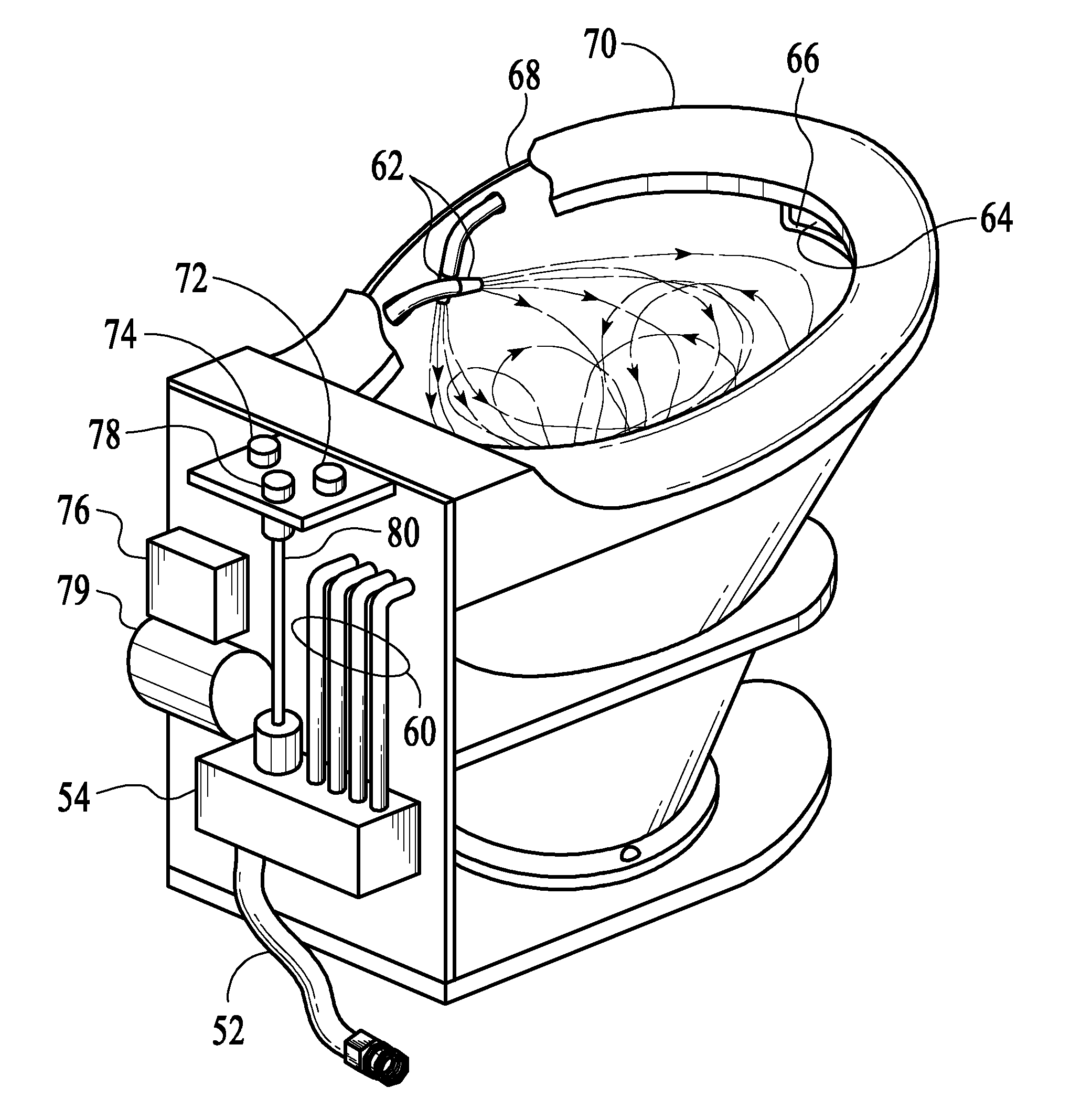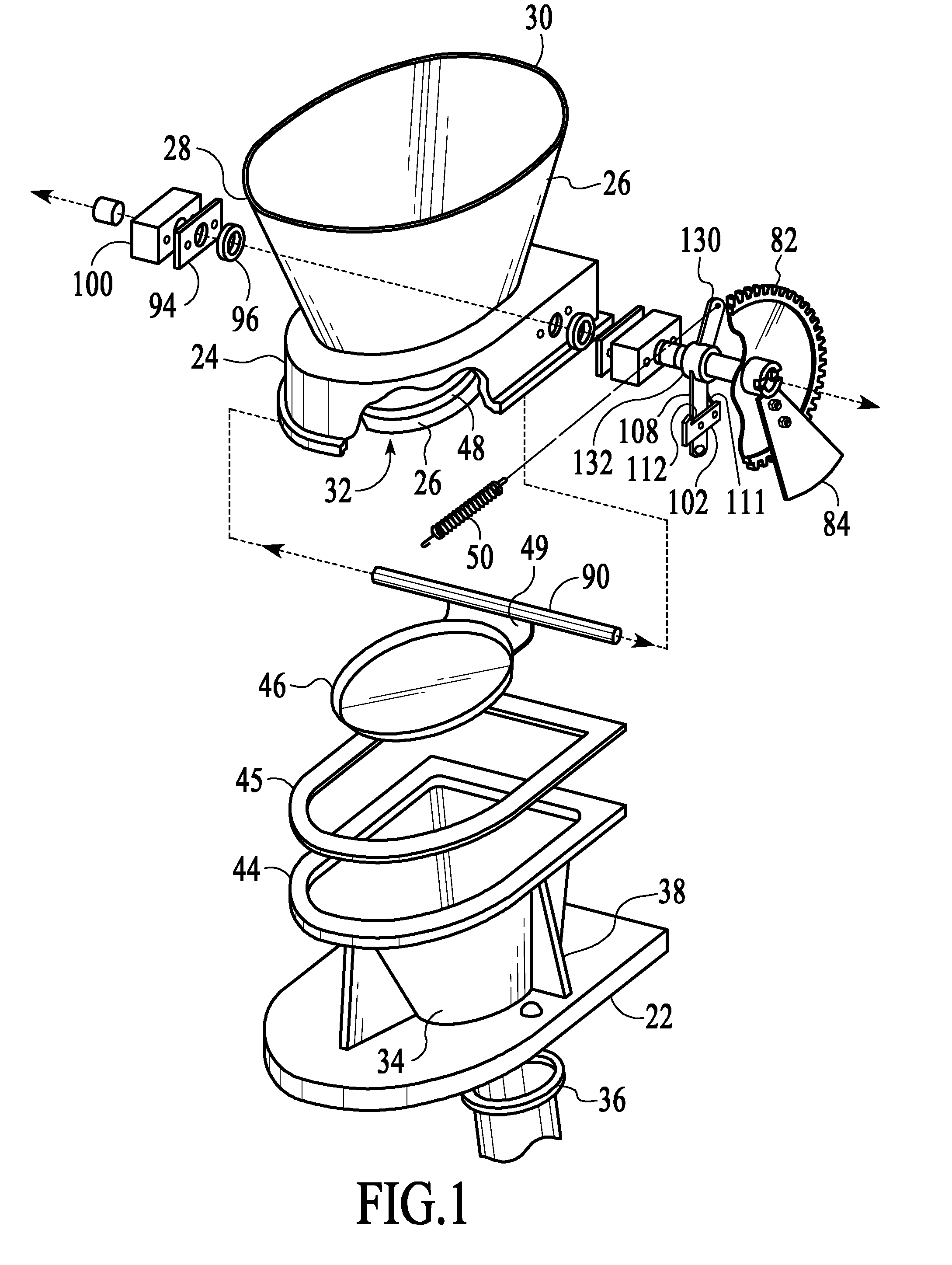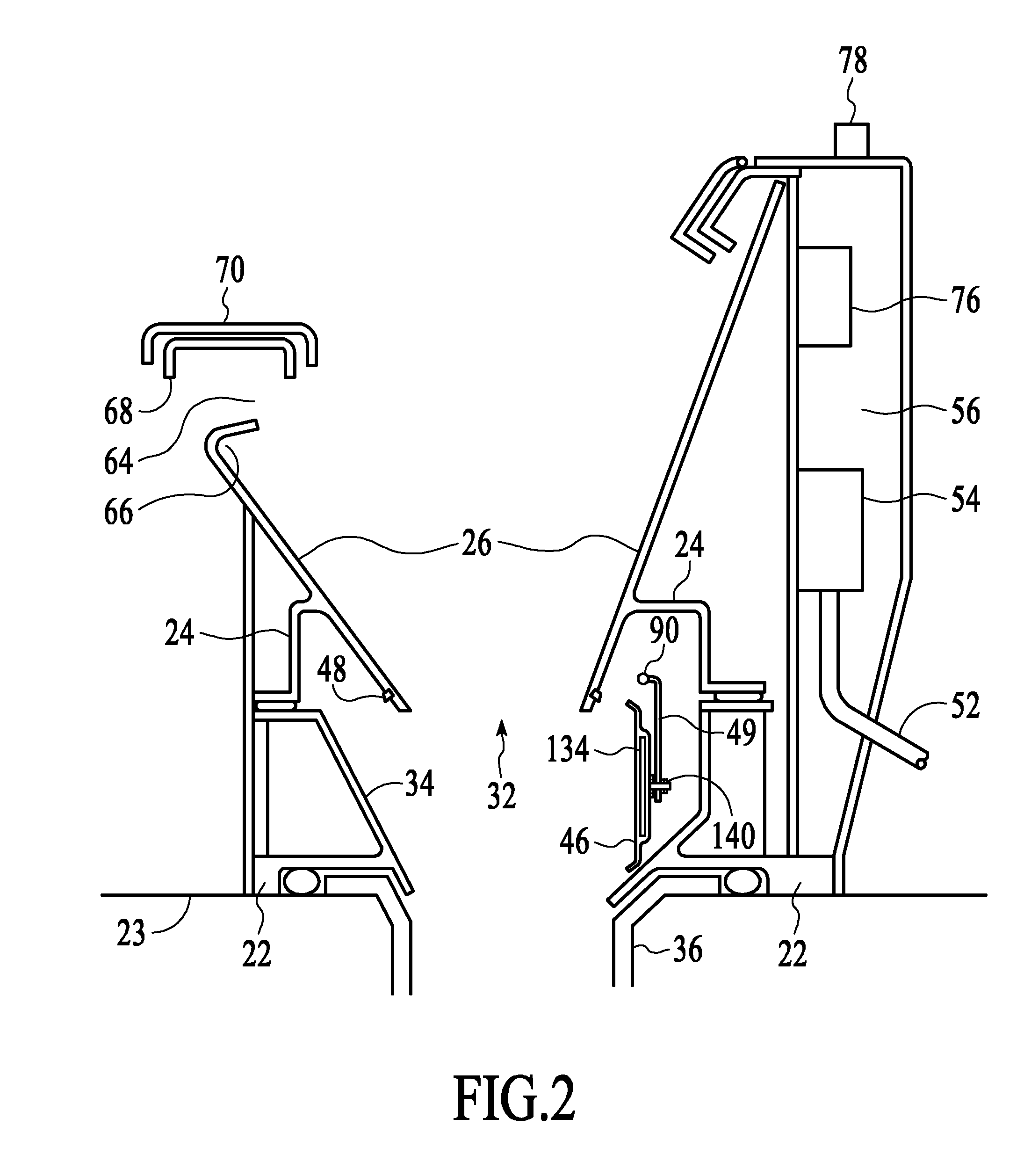Mechanical Trap Toilet and Staggered Drain Line Carry
a mechanical trap and drain line technology, applied in the field of toilets, can solve the problems of not being able to measure the carrying efficiency of the toilet, san francisco alone can lose $100 million dollars in 5 years, and further damage to the sewer system and sewage treatment plant, so as to achieve the effect of reducing the cost of odor control, and reducing the number of toilets
- Summary
- Abstract
- Description
- Claims
- Application Information
AI Technical Summary
Benefits of technology
Problems solved by technology
Method used
Image
Examples
Embodiment Construction
[0061]Accordingly, several advantages of one or more aspects of the present invention are (a) a staggered flush that improves drain line carry, (b) no need for a water seal, (c) the bottom outlet of the bowl and the waste passageway are much wider than those of a siphon toilet so the bowl and waste passageway are correspondingly more unlikely to clog, (5) it can't contaminate drinking water, (6) the bowl is unlikely to over flow onto a bath room, (7) it can meet or surpass all of the historical health and functional advantages of siphon and wash-down toilets, and (8) and is more ecological because it uses much less water per-person-per-day. Furthermore, for all but very small children, a maker can customize the toilet comfortably to seat a customer of any height and weight, or customer subset, by omitting gasket 45 in FIG. 1 and FIG. 2, and separating the upper support structure of the toilet from the lower support structure of the toilet by a vertical distance comparable to the hei...
PUM
 Login to View More
Login to View More Abstract
Description
Claims
Application Information
 Login to View More
Login to View More - R&D
- Intellectual Property
- Life Sciences
- Materials
- Tech Scout
- Unparalleled Data Quality
- Higher Quality Content
- 60% Fewer Hallucinations
Browse by: Latest US Patents, China's latest patents, Technical Efficacy Thesaurus, Application Domain, Technology Topic, Popular Technical Reports.
© 2025 PatSnap. All rights reserved.Legal|Privacy policy|Modern Slavery Act Transparency Statement|Sitemap|About US| Contact US: help@patsnap.com



